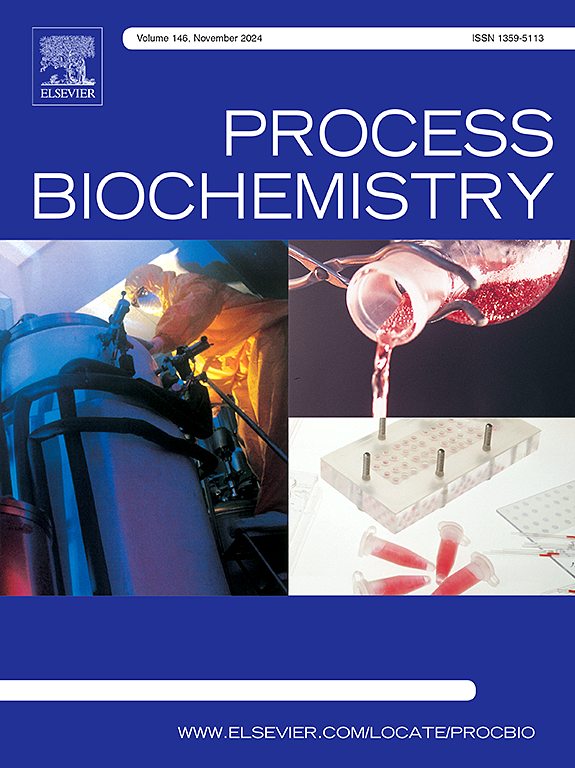Deep-eutectic solvent extraction of ginsenosides and ginseng polysaccharides from ginseng residue and utilization of post-extraction residue
IF 3.7
3区 生物学
Q2 BIOCHEMISTRY & MOLECULAR BIOLOGY
引用次数: 0
Abstract
In this study, ginsenosides and polysaccharides were extracted from ginseng residue (GR) using a green method combining deep eutectic solvent (DES) and ultrasound. The results showed that the optimal extraction conditions of ginsenosides optimized by orthogonal test were choline chloride/propionic acid ratio of 1:3, moisture content of 30 %, solid-liquid ratio of 1:25, and ultrasound time of 30 min, which resulted in the yield of ginsenosides of 36.76 ± 1.46 mg/g, and improved the efficiency by 218.27 % compared with that of the traditional 70 % ethanol extraction method. The ginseng polysaccharides obtained by further purification of the extract showed different in vitro antioxidant activities, with scavenging rates of 91.2 %, 98.3 %, and 96.4 % for hydroxyl radicals, DPPH, and superoxide radicals, respectively, and Fe(Ⅱ) chelating activity at 93.5 %. The extracted GR showed good adsorption properties for glucose, sodium nitrite, cholesterol, and sodium cholate by in vitro adsorption tests with adsorption rates of 60 %, 93.3 %, 87.05 %, and 72.95 %, respectively. In conclusion, the use of DES as an extraction solvent has certain application prospects for GR reuse.
人参渣中人参皂苷和人参多糖的深度共晶溶剂提取及提取后渣的利用
本研究以人参渣(GR)为原料,采用深度共晶溶剂(DES)和超声波相结合的绿色萃取法提取人参皂苷和人参多糖。结果表明,经正交试验优化得到的人参皂苷最佳提取工艺为氯化胆碱/丙酸比1:3、含水率30 %、料液比1:25、超声时间30 min,得到的人参皂苷得率为36.76 ± 1.46 mg/g,比传统的70 %乙醇提取法提取率提高218.27 %。进一步纯化得到的人参多糖具有不同的体外抗氧化活性,对羟基自由基、DPPH和超氧自由基的清除率分别为91.2 %、98.3% %和96.4 %,对Fe(Ⅱ)的螯合活性为93.5 %。体外吸附试验表明,提取的GR对葡萄糖、亚硝酸钠、胆固醇和胆酸钠具有良好的吸附性能,吸附率分别为60 %、93.3 %、87.05 %和72.95 %。综上所述,使用DES作为萃取溶剂对GR的再利用具有一定的应用前景。
本文章由计算机程序翻译,如有差异,请以英文原文为准。
求助全文
约1分钟内获得全文
求助全文
来源期刊

Process Biochemistry
生物-工程:化工
CiteScore
8.30
自引率
4.50%
发文量
374
审稿时长
53 days
期刊介绍:
Process Biochemistry is an application-orientated research journal devoted to reporting advances with originality and novelty, in the science and technology of the processes involving bioactive molecules and living organisms. These processes concern the production of useful metabolites or materials, or the removal of toxic compounds using tools and methods of current biology and engineering. Its main areas of interest include novel bioprocesses and enabling technologies (such as nanobiotechnology, tissue engineering, directed evolution, metabolic engineering, systems biology, and synthetic biology) applicable in food (nutraceutical), healthcare (medical, pharmaceutical, cosmetic), energy (biofuels), environmental, and biorefinery industries and their underlying biological and engineering principles.
 求助内容:
求助内容: 应助结果提醒方式:
应助结果提醒方式:


